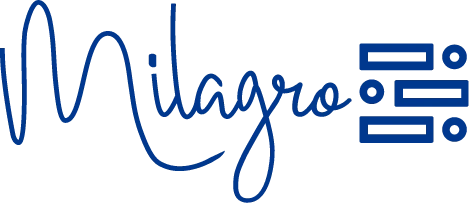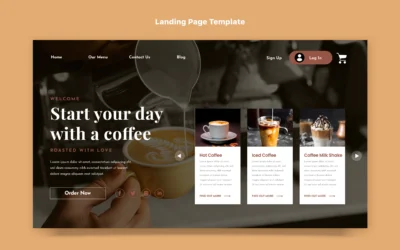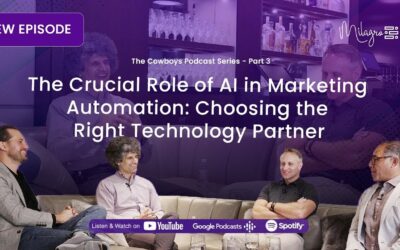Technological improvements have always benefited the restaurant industry. Restaurants strive to deliver a faultless, convenient, and delightful experience for their patrons. Technology enables the acceleration of processes as well as the enhancement of the customer experience.
One of the most difficult aspects of digital marketing is managing customer data. Restaurant organizations of all sizes continue to struggle with obtaining, analyzing, and, most crucially, acting on data to expand their businesses.
Restaurants face a variety of customer data challenges that fall into a few categories:
- Accessibility Issues: Data is locked in antiquated systems, or third-party delivery networks and consumer-facing discovery networks prohibit access entirely.
- Inadequate integration: Data can be accessed, but no team or technology is capable of putting it all together. Furthermore, systems that rigidly unify data add layers of fees.
- Lack of actionable data: The tools that Operations, Culinary, Marketing, and Finance workers utilize regularly aren’t receiving integrated data.
- Inability to test or experiment: Any of the aforementioned factors makes testing and piloting new strategies—from menu engineering to online and offline marketing efforts—nearly impossible.
Milagro’s Customer Data Platform (CDP) can assist your restaurant in overcoming these challenges and distinguishing itself from the competition. Customer data platforms are newer tools that aid restaurant marketing teams in better understanding their customers.
Let’s take a closer look at how Milagro’s CDP solutions can help take your restaurant business to the next level.
What is a Customer Data Platform (CDP)?
A customer data platform (CDP) is a stand-alone software solution that collects data from all of your customer touchpoints. This includes purchase history, social media channels, sales and service interactions, smart device usage, and so on. The CDP then makes that information usable and accessible to your various customer engagement teams.
Milagro’s CDP stand-alone software solution means it is ready to use right out of the box.
In other words, it’s not a project you’ll have to rely on your IT staff or a third-party firm to complete.
Milagro’s CDP gathers data from various sources, unifies it, and stores it for as long as you want. This allows you to build a comprehensive customer profile for each of your customers.
Finally, data in the CDP can be exchanged with any other system that requires it via an API, frequently in real-time.
What is the function of a CDP?
A CDP system collects, consolidates, and normalizes customer data from a variety of online and offline sources. Data is centralized for analytics, campaigns, and other business requirements.
- Gather and combine all first-party data:
Many of the systems used by marketers, such as email, analytics, CRM, eCommerce, and social sites, operate in silos and do not exchange data. It’s difficult to get a complete picture, and even more difficult to analyze what you’re looking at. By leveraging a single, centralized data repository, Milagro’s CDP visualizes acquired data through individual user profiles, resulting in a 360-degree customer view. - Data management for customers:
CDPs manage first-party data, consumer privacy, data rights, and data flow between marketing systems by controlling data flows and managing consent. This is the world of GDPR and data privacy; your company must actively manage, document, consent, and data flows. Mitigating the risks connected with such requirements is a major use case for Milagro’s Customer Data Platform (CDP). In the event of a breach, they might result in substantial penalties. - Activation of customer data:
You can take action on first-party user data once you’ve received permission to collect it and have unified and structured it into profiles. CDPs can help you create audience segments that you can use across all of your marketing platforms and channels. Data activation is a must if you want to see a significant return on your CDP. Marketers may use data activation to discover their target audience and use that audience across different channels from the same platform by gathering insights, pulling lists, leveraging AI, and more.
What sets CDPs apart from data warehouses
Data warehouses and data lakes are not designed to meet the needs of marketers. Data lakes are collections of data that are usually in the same format as the data they came from.
Data warehouses, unlike consumer data platforms, do not process raw data to make it more usable; they are intended to support analysis rather than drive customer interactions.
The advantages of a CDP for your restaurant
- Improved usability:
Milagro’s CDPs organize data for rapid access and require very little work to set up. Setup and maintenance are not nearly as difficult as they are with a standard data warehouse. - Unified customer data:
Using a customer data platform minimizes inconsistencies in data gathered from various online and offline sources. As a result, you get a dependable, unified single customer view. - Customized analysis:
Users can use CDPs to acquire insights from real-time data, uncover high-value segments, improve machine learning using high-quality data, and forecast a customer’s next steps. - Democratization of customer data:
Data democratization implies that everyone has access to data and that there are no gatekeepers who create a bottleneck at the data’s entry point. The goal is for anyone, at any time, to use data to make decisions with no barriers to access or comprehension. Milagro’s CDP democratizes consumer data access, removes IT bottlenecks, and allows for better marketing, customer service, and business insight. - Access to third party data:
To ensure that your marketing has a broad reach and that your single customer view is comprehensive, you must have access to third-party data sources. However, most data sources face two issues: quality and privacy. MIlagro’s CDP systems include both first-party and anonymous third-party data. Machine learning is used to create prediction models and suggestions, resulting in more powerful, actionable insights. These insights can be shared with sales and customer service systems by CDPs.
The bottom line
The advantages of a consumer data platform can be applied across your entire restaurant operation. You’ll gain greater consumer insights by streamlining and organizing your customer data. This will allow you to better engage customers by anticipating their requirements and adapting your interactions with them.
Get in touch with our team at Milagro today for more information on our Customer Data Platform solutions.
Learn more about this topic using targeted marketing channels for restaurants.





